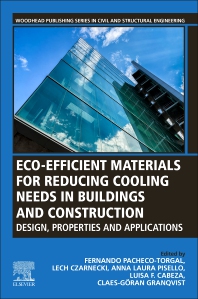Attorneys for environmental groups and a major utility battled before the Supreme Court over a Clean Air Act provision that deals with when emissions from powerplants that undergo modifications are large enough to require upgraded pollution-control systems. It's unclear whether the court's decision, expected by next summer, will have a broad effect on the clean air statute or be focused narrowly on regulatory details.
 Duke Energy Corp. Case deals with eight Duke Energy coal-fired powerplants in the Carolinas, including Belews Creek in Stokes County, N.C. |
During oral arguments on Nov. 1 in the case, Environmental Defense v. Duke Energy Corp., the justices quizzed lawyers for both sides about the complexities of definitions of terms in U.S.Environmental Protection Agency regulations stemming from the clean air law's "New Source Review" provisions. That program requires powerplant and factory owners to install up-to-date emissions-control equipment when they make modifications to their facilitie that increase emissions. Parties in the case differ on what the regulatory definitions of "modifications" and "increase" are.
The case and the oral arguments covered jurisdictional and regulatory questions. On the jurisdictional point, Environmental Defense contends federal clean air regulations can only be challenged in the U.S. Court of Appeals for the District of Columbia Circuit. The Duke Energy case came up from the Fourth Circuit appellate court.
On the regulatory point, the environmental group says that the clean air statute's definition of a plant "modification" is at odds with the EPA regulatory benchmark that uses actual, annual emissions. But Duke Energy counters that the work on its plants didn't constitute modifications "as that term has been defined and used for decades under those rules and under the act."
Environmental Defense's attorney, Sean H. Donahue, told the justices that the regulation at issue is "clear on its face." Chief Justice John Roberts interjected, "That's an audacious statement," which sparked laughter from the audience.
Associate Justice Antonin Scalia said that "companies can get whipsawed" because they don't challenge regulations when there are changing interpretations of the rules.
Duke Energy says in its brief that it "could not have challenged EPA's enforcement position in a petition for review because EPA did not interpret its rules then the way it does now."
Scalia and Associate Justice Samuel Alito referred to statements made in the early 1980s by the EPA official then in charge of its stationary source division that a plant modification that increases the facility's operating time but not its hourly pollution-emissions rate doesn't constitute a "modification."
Alito asked Donahue how to account with the EPA official's statements. Donahue said the official "misapplied" the regulation.
The high court is expected to decide the case during its current term, which ends next July. After the one-hour argument, attorneys who represented each side before the court declined to forecast how it might rule.
Donahue said, "Obviously, the alphabet soup that is this program is not easy even for people accustomed to very complex legal questions." He said, "We're very optimistic that the court will get it right in this case," but added, "I don't predict one way or the other."
Asked how broad a decision the court might write, Duke Energy's attorney, Carter G. Phillips, "I don't think there's any way you can predict based on the way the questioning went." He noted, "There were some questions that dealt with fundamental issues involving the statute. There were questions that dealt with minutia within the regulatory scheme."
Phillips added, "And it's difficult to know how you count to five [the minimum number of justices for a majority] and how the court's going to come out. I will be surprised if you get a decision very soon."
The case deals with a lawsuit that the EPA filed in 1999 against Duke Energy, part of a broader enforcement push by the agency against several utility companies. It centers on 29 projects that Duke carried out beginning as early as 1988 at eight powerplants in North Carolina and South Carolina, In its brief, Duke argued that EPA claimed "NSR could be triggered by commonplace projects that merely maintain a facility's operating capabilities and do not increase the facility's emissions rate."
A federal district court and the Fourth Circuit Court of Appeals ruled in Duke's favor. Environmental Defense appealed the Fourth Circuit's ruling to the Supreme Court.
To read the Environmental Defense and Duke Energy briefs, see http://www.abanet.org/publiced/preview/briefs/nov06.shtml#environ.


